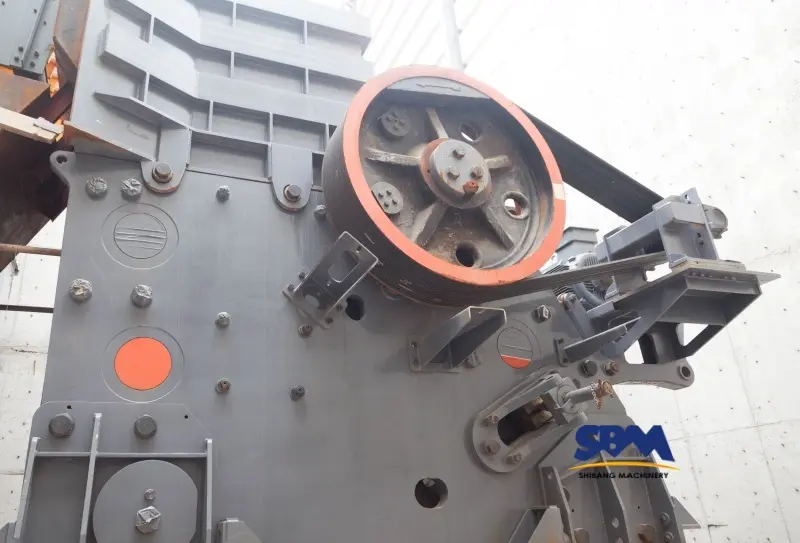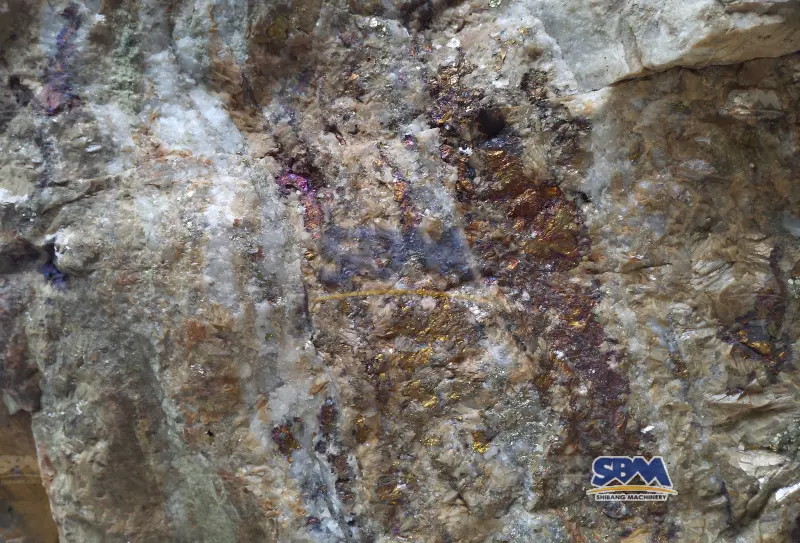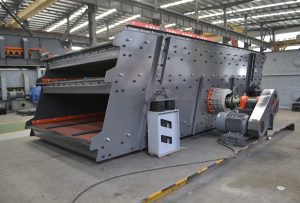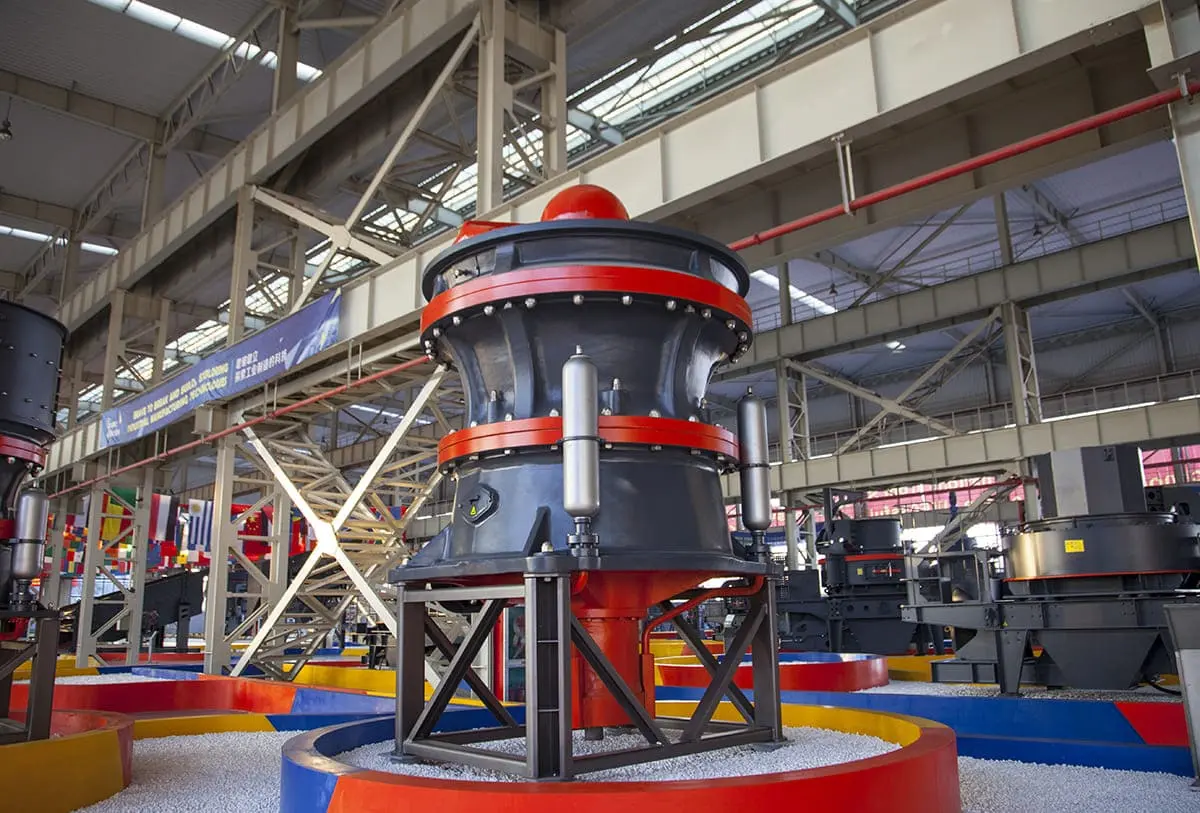E-mail: [email protected]
Cách chọn máy nghiền phụ?
Make A Secondary Crusher Choice
Choosing the right secondary crusher isn’t just a simple buy—it’s a smart choice that affects how much your plant produces, how much energy you use, how often you need repairs, and even how much money you make. Working in mineral processing, I know how choosing a good crusher can make your job easier and your profits higher, while choosing the wrong one can make everything harder.
Want to make a choice you’ll be happy with? Let’s break down how secondary crushers work, the different kinds out there, the factors you should focus on, and how to find the best machine for your material and site.
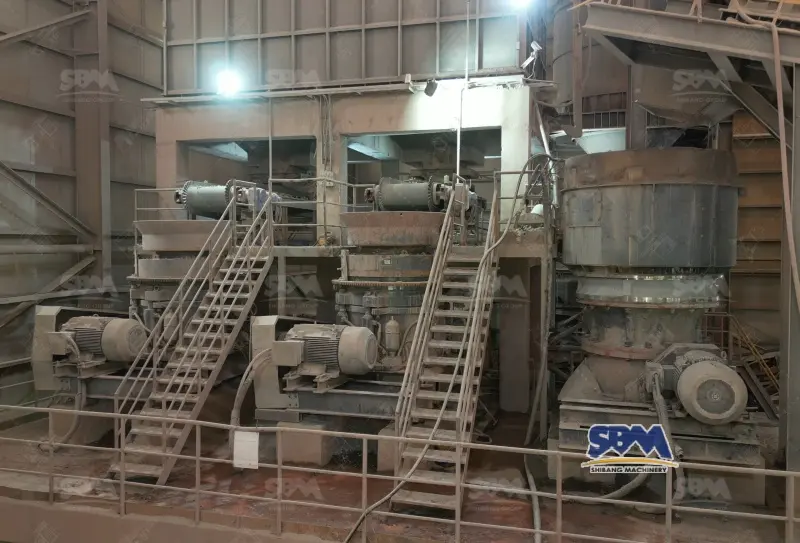
What is a Secondary Crusher?
A secondary crusher is a machine that takes crushed material from the first crusher and makes it even smaller—usually starting with chunks about 70 to 200mm and turning them into pieces that are easier to handle for more processing or for final use. This stage is really important in mining and making building materials, because it affects things like the size of the output, how smooth the whole plant runs, and the shape of the final product.
Đơn giản chỉ cần đặt: the right secondary crusher turns “medium” pieces into “just right” ones. It works right after a jaw crusher or gyratory crusher and can help or hurt how well the rest of your system works.
Types of Secondary Crushers
Different jobs and rocks call for different secondary crushing solutions. Here are the most common types and when you’d pick each one:
1. Máy nghiền hình nón
- How it works: Uses a spinning cone and a bowl to compress material.
- Tốt nhất cho: Cứng, Đá mài mòn (like granite, đá bazan).
- Pro: High throughput, consistent size and shape, excellent for concrete aggregate.
- Con: Can be more costly up-front and slower to adjust for different output sizes.
2. máy nghiền tác động (Includes HSI & MỌI NGƯỜI)
- How it works: Uses high-speed impact of rotating hammers (HSI) or material-on-material (MỌI NGƯỜI) to fracture rocks.
- Tốt nhất cho: Medium to soft materials (đá vôi, recycled concrete).
- Pro: High reduction ratio, great cubic product shape, adjustable output size.
- Con: Wear parts can go faster (especially with hard or abrasive stone), not ideal for unbreakable debris.
3. Máy nghiền Gyratory
- How it works: Similar to a cone but with a steeper chamber and higher capacity.
- Tốt nhất cho: Very high throughput, very hard materials, or specific mineral ores.
- Pro: Handles high-demand, tough materials.
- Con: Large footprint, high initial cost, complex maintenance.
4. máy nghiền hàm (Occasionally Used for Secondary)
- Ghi chú: Sometimes a secondary jaw is used for very hard rock or specific needs, but it’s less common. Nói chung là, jaw crushers are preferred for primary crushing.
5. HSI (Horizontal Shaft Impact) máy nghiền
- How it works: Blasts material against stationary plates using a horizontal rotor.
- Tốt nhất cho: Softer to medium-hard stone, tái chế, and where uniform cube shape is key.
- Pro: Good particle shape, flexible for varied applications.
- Con: Not suitable for extremely hard stones.
6. MỌI NGƯỜI (Tác động trục dọc) máy nghiền
- How it works: Throws material at high speed against anvils or rock beds.
- Tốt nhất cho: High-quality cubical aggregate for concrete and asphalt, sometimes as a secondary or tertiary crusher.
- Pro: Unmatched product shape; ideal for specialty sand or high-spec construction materials.
- Con: More wear parts, not ideal for large, tough chunks.
Key Factors When Choosing a Secondary Crusher
Time for the big question: How do you decide which secondary crusher fits your needs? Based on years of practical experience, plus up-to-date resources, here are the top factors:
1. Feed Material Type & Độ cứng
- đá hoa cương/thạch anh/đá bazan: Cone crusher or gyratory.
- Limestone/Recycled Concrete: Impact crusher or HSI.
- Mixed/Unknown: Consider testing first—especially for wear costs.
2. Feed & Kích thước đầu ra
- Know your max input size and the target output. Crusher specs will state max input and achievable product size.
3. Desired Product Shape
- Needing a super-cubical (equally sized, well-shaped) product? VSI or HSI usually win—but cones can be tuned for shape too.
4. Dung tích (TPH)
- Match crusher throughput (tấn mỗi giờ) to your site’s expected demand. Too much = wasted spend; too little = bottlenecks.
5. Operating and Maintenance Cost
- Cone and gyratory = higher up-front, usually lower ongoing wear.
- Impact = lower buy-in, potentially higher wear part costs on hard rock.
6. Crusher Adjustability
- Do you need frequent output size changes? HSI and impact crushers are easier to adjust on the fly.
7. Footprint and Integration
- Some crushers need more space or heavier foundations.
- Mobile/portable crushers offer fast deployment for changing sites.
8. Environmental Requirements
- Bụi, noise, and vibration can impact permitting or neighborhood acceptance—plan for these from the start.
Product Parameter Comparison Table
Here’s a side-by-side look at typicalsecondary crusher parameters using industry models (based on published specs and reference sites):
| Parameter | Máy nghiền hình nón | máy nghiền tác động (HSI) | Máy nghiền Gyratory | máy nghiền VSI |
|---|---|---|---|---|
| Max Feed Size (mm) | 200–350 | 250–700 | 300–400 | 80–120 |
| Kích thước đầu ra (mm) | 10–60 | 20–100 | 20–100 | 3–50 |
| Dung tích (TPH) | 80–1000 | 50–600 | 200–1200 | 30–400 |
| Best For Materials | Cứng, mài mòn | Softer, medium-hard | Very hard, large | Cubical-shaped, khỏe |
| Product Shape | Tốt | Excellent | Tốt | Best |
| Wear Part Cost | Vừa phải | Higher on hard rock | Vừa phải | Cao (if hard rock) |
| Maintenance Ease | Trung bình | Easy | Difficult | Vừa phải |
(Values are typical ranges—always check vendor specs for your chosen model.)
Real-World Scenarios: Crusher Selection in Practice
A story brings all this advice into focus! Here are two actual examples:
Case 1: Granite Quarry
“When our team faced consistent downtime and uneven product in our granite operation, switching from an aging impact crusher to a new cone crusher made a massive difference. Productivity jumped, maintenance intervals got longer, and the final aggregate was perfect for high-end concrete.”
Case 2: Concrete Recycling Plant
“We went with an HSI impact crusher for recycling. It quickly converted slabs into reusable aggregate, changed output sizes as our projects changed, and the cubical shape just made downstream screening easy. Wear part replacement was more frequent, but the lower upfront cost meant our return on investment came faster.”
Selection Cheat Sheet: At-a-Glance
| Nhu cầu | Best Crusher(s) |
|---|---|
| Hard/abrasive stone | Hình nón, Gyratory |
| Soft/medium stone | Sự va chạm, HSI, MỌI NGƯỜI |
| Highest throughput | Gyratory, Hình nón (large models) |
| Most cubical shape | MỌI NGƯỜI (for fine); HSI/Impact (trung bình) |
| Most adjustable output | Sự va chạm, HSI |
| Lowest wear on hard rock | Hình nón, Gyratory |
| Tái chế | HSI, Sự va chạm |
| Portable/mobile needed | Mobile Impact, Mobile Cone |
Frequently Asked Questions
Q: Can a single crusher type work for every project?
A: Not really! Each stone and site is different, so matching the crusher to both feed and demand is key to performance and cost control.
Q: What if I’m not sure about my rock type?
A: It’s worth sending a sample for proper testing—this small step can avoid big headaches down the road!
Q: How do I compare energy use?
A: Hình nón Và gyratory generally use less energy per ton with hard rock, while sự va chạm/MỌI NGƯỜI may be more economical for softer or recycled materials.
Q: Should I care about product shape?
A: Absolutely—if your aggregate is used in concrete or high-value road surfacing, the right shape means better workability and even higher prices.
Your Ideal Secondary Crusher Awaits
Choosing the rightsecondary crusher is all about knowing your material, output requirements, and site goals. Don’t be afraid to ask your manufacturer for product-specific advice and customer references. Many sites even benefit from running both cone and impact crushers—one for primary production and another for specialty shapes.
The next step? Take your feed and output specs, browse detailed product tables from top manufacturers, and request hands-on demos to see which machine truly fits your workflow.
Remember: An informed decision now can save months of frustration, BẢO TRÌ, and unexpected expense down the road. Need tailored advice or more technical product guides? Reach out—I’m always happy to help fellow professionals make smart choices!
trụ sở văn phòng
Whatsapp:+8615225176731
E-mail: [email protected]
Địa chỉ: KHÔNG. 1688, Đường Đông Gaoke, quận mới Phố Đông, Thượng Hải, Trung Quốc.
Trang mạng: https://www.mill-sbm.com/

